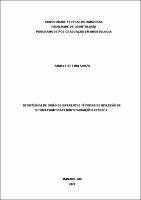| ???jsp.display-item.social.title??? |


|
Please use this identifier to cite or link to this item:
https://tede.ufam.edu.br/handle/tede/10198Full metadata record
| DC Field | Value | Language |
|---|---|---|
| dc.creator | Souza, Yamille de Lima | - |
| dc.creator.Lattes | http://lattes.cnpq.br/3326023238708247 | eng |
| dc.contributor.advisor1 | Almeida, Rui Isidro Falacho da Fonseca | - |
| dc.contributor.advisor1Lattes | https://www.cienciavitae.pt/portal/pt/1F1D-DC29-5A85 | eng |
| dc.contributor.advisor-co1 | Martins, Luciana Mendonça da Silva | - |
| dc.contributor.advisor-co1Lattes | http://lattes.cnpq.br/6945836582080606 | eng |
| dc.contributor.referee1 | Martins, Leandro de Moura | - |
| dc.contributor.referee1Lattes | http://lattes.cnpq.br/5556342682040998 | eng |
| dc.contributor.referee2 | Regalado, Diego Ferreira | - |
| dc.contributor.referee2Lattes | http://lattes.cnpq.br/9381507904232056 | eng |
| dc.date.issued | 2024-03-06 | - |
| dc.identifier.citation | SOUZA, Yamille de Lima. Resistência de união de diferentes técnicas de inserção de resina composta em restaurações Classe I. 2024. 63 f. Dissertação (Mestrado em Odontologia) - Universidade Federal do Amazonas, Manaus (AM), 2024. | eng |
| dc.identifier.uri | https://tede.ufam.edu.br/handle/tede/10198 | - |
| dc.description.resumo | Na literatura científica, persiste uma controvérsia acerca do impacto das técnicas de inserção na longevidade e resistência de união de restaurações de resina composta à estrutura dentária. Neste contexto, o presente estudo objetivou avaliar a resistência de união e padrões de falhas de diferentes técnicas de inserção de resina composta em dentes humanos extraídos. Vinte e quatro molares hígidos foram sub-divididos em 3 grupos de acordo com a técnica restauradora: incremental horizontal (RCH), incremental oblíqua (RCO) e técnica bulkfill (RCB). Todos os dentes passaram por um procedimento padronizado e foram restaurados de acordo com a técnica restauradora alocada a cada grupo. Em seguida foram submetidos a máquina de corte (ODEME OCP 100 LC, Santa Catarina, Brasil) e teste de microtração (ODEME OM100, Santa Catarina, Brasil), a uma velocidade de 0,5mm/seg até a falha. A avaliação dos resultados foi realizada com o auxílio de um microscópio, em uma ampliação de 30x, classificando as falhas como adesivas, coesivas (em resina ou dentina) ou mistas. Para a análise comparativa das tensões, empregou-se a análise descritiva e um modelo de regressão linear misto. Adicionalmente, a análise de Weibull foi utilizada para investigar a probabilidade de fratura, adotando-se um nível de significância estatística de 0,05 e os programas estatísticos Matlab (R2021b) e IBM® SPSS® v28. Dos 158 espécimes analisados, não se observou diferença estatisticamente significativa entre os grupos (p=0,769), nem associação significativa entre o tipo de fratura e as técnicas empregadas (p>0,05). Este estudo concluiu que não há diferença na resistência de união das diferentes técnicas de inserção de resinas compostas avaliadas. | eng |
| dc.description.abstract | In the scientific literature, controversy persists regarding the impact of insertion techniques on the longevity and bond strength of composite resin restorations to the tooth structure. In this context, the present study aimed to evaluate the bond strength and failure patterns of different composite resin insertion techniques in extracted human teeth. Twenty-four sound molars were subdivided into 3 groups according to the restorative technique: horizontal incremental (RCH), oblique incremental (RCO) and bulkfill technique (RCB). All teeth underwent a standardized procedure and were restored according to the restorative technique allocated to each group. They were then subjected to a cutting machine (ODEME OCP 100 LC, Santa Catarina, Brazil) and microtensile test (ODEME OM100, Santa Catarina, Brazil), at a speed of 0.5mm/sec until failure. The evaluation of the results was carried out with the aid of a microscope, at a magnification of 30x, classifying the failures as adhesive, cohesive (in resin or dentin) or mixed. For the comparative analysis of tensions, descriptive analysis and a mixed linear regression model were used. Additionally, Weibull analysis was used to investigate the probability of fracture, adopting a statistical significance level of 0.05 and the statistical programs Matlab (R2021b) and IBM® SPSS® v28. Of the 158 specimens analyzed, there was no statistically significant difference between the groups (p=0.769), nor a significant association between the type of fracture and the techniques used (p>0.05). This study concluded that there is no difference in the bond strength of the different composite resin insertion techniques evaluated. | eng |
| dc.description.sponsorship | FAPEAM - Fundação de Amparo à Pesquisa do Estado do Amazonas | eng |
| dc.format | application/pdf | * |
| dc.thumbnail.url | https://tede.ufam.edu.br/retrieve/75919/DISS_YamilleSouza_PPGO.jpg | * |
| dc.language | por | eng |
| dc.publisher | Universidade Federal do Amazonas | eng |
| dc.publisher.department | Faculdade de Odontologia | eng |
| dc.publisher.country | Brasil | eng |
| dc.publisher.initials | UFAM | eng |
| dc.publisher.program | Programa de Pós-graduação em Odontologia | eng |
| dc.rights | Acesso Aberto | - |
| dc.rights.uri | https://creativecommons.org/licenses/by-nc-nd/4.0/ | por |
| dc.subject | . | por |
| dc.subject | . | por |
| dc.subject | . | por |
| dc.subject.cnpq | CIENCIAS DA SAUDE: ODONTOLOGIA | eng |
| dc.title | Resistência de união de diferentes técnicas de inserção de resina composta em restaurações Classe I | eng |
| dc.type | Dissertação | eng |
| dc.subject.user | Resinas compostas | por |
| dc.subject.user | Resistência à tração | por |
| dc.subject.user | Técnica de inserção | por |
| Appears in Collections: | Mestrado em Odontologia | |
Files in This Item:
| File | Description | Size | Format | |
|---|---|---|---|---|
| DISS_YamilleSouza_PPGO | 2.39 MB | Adobe PDF |  Download/Open Preview |
Items in DSpace are protected by copyright, with all rights reserved, unless otherwise indicated.




